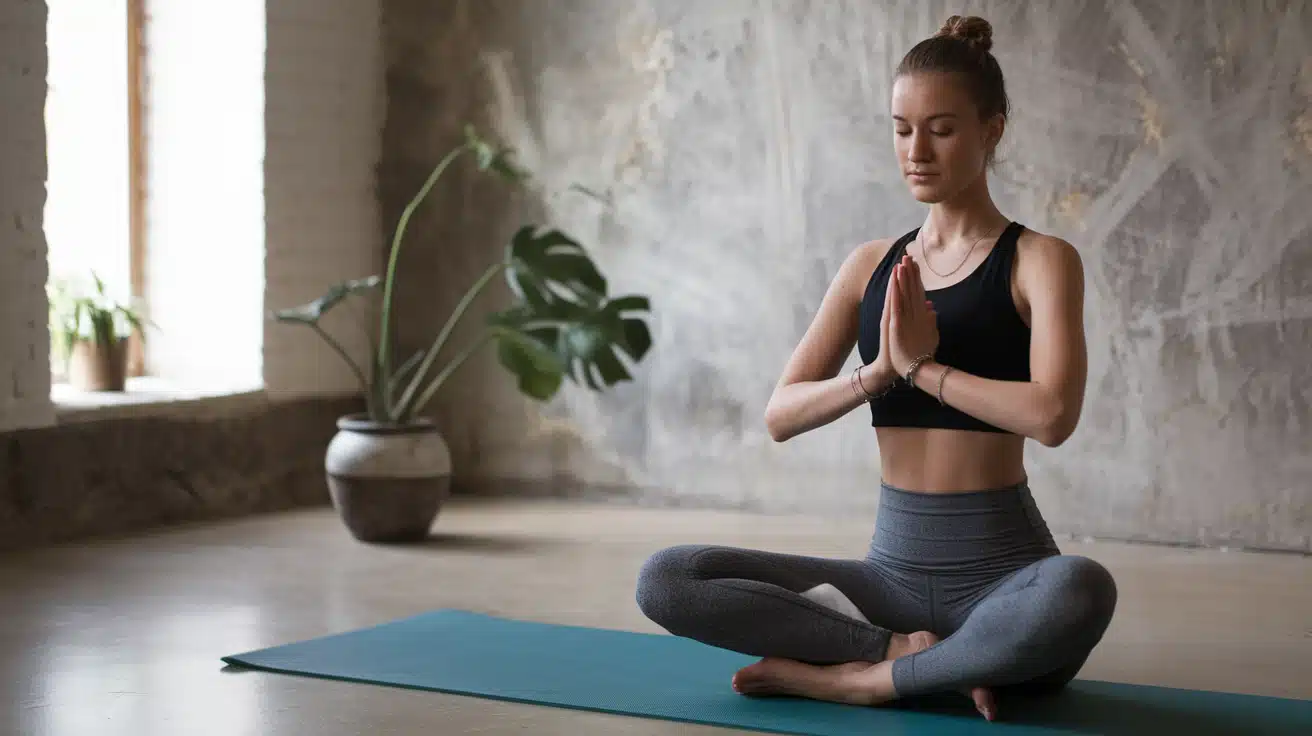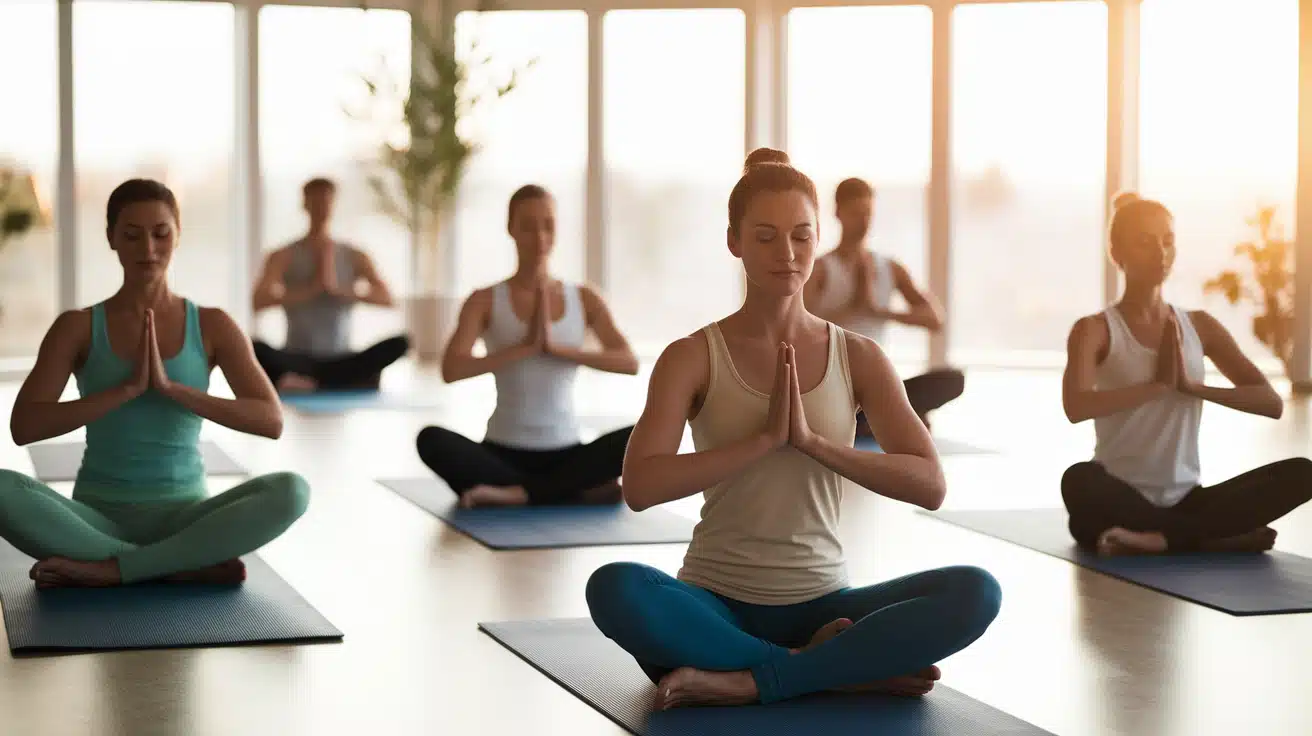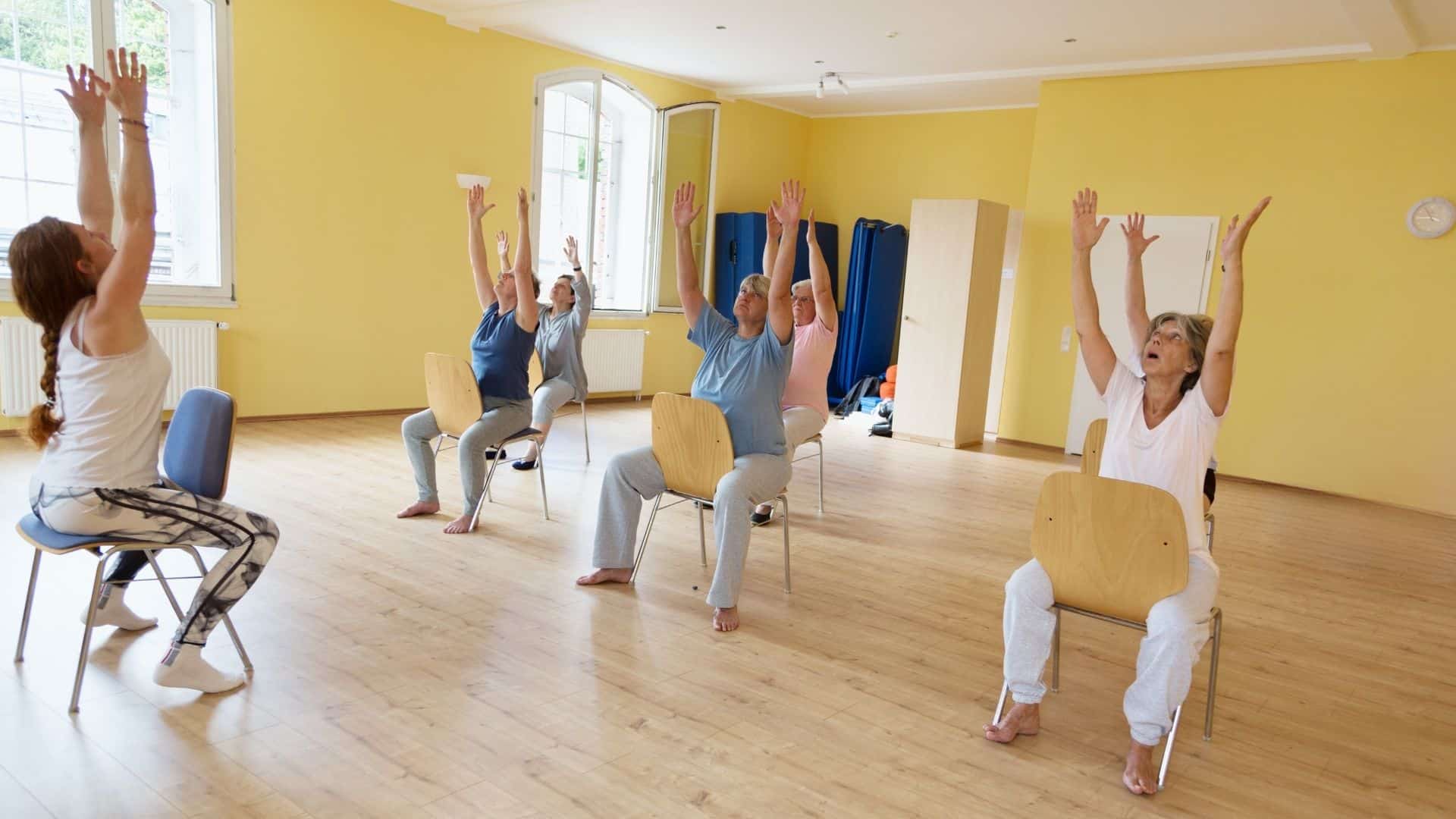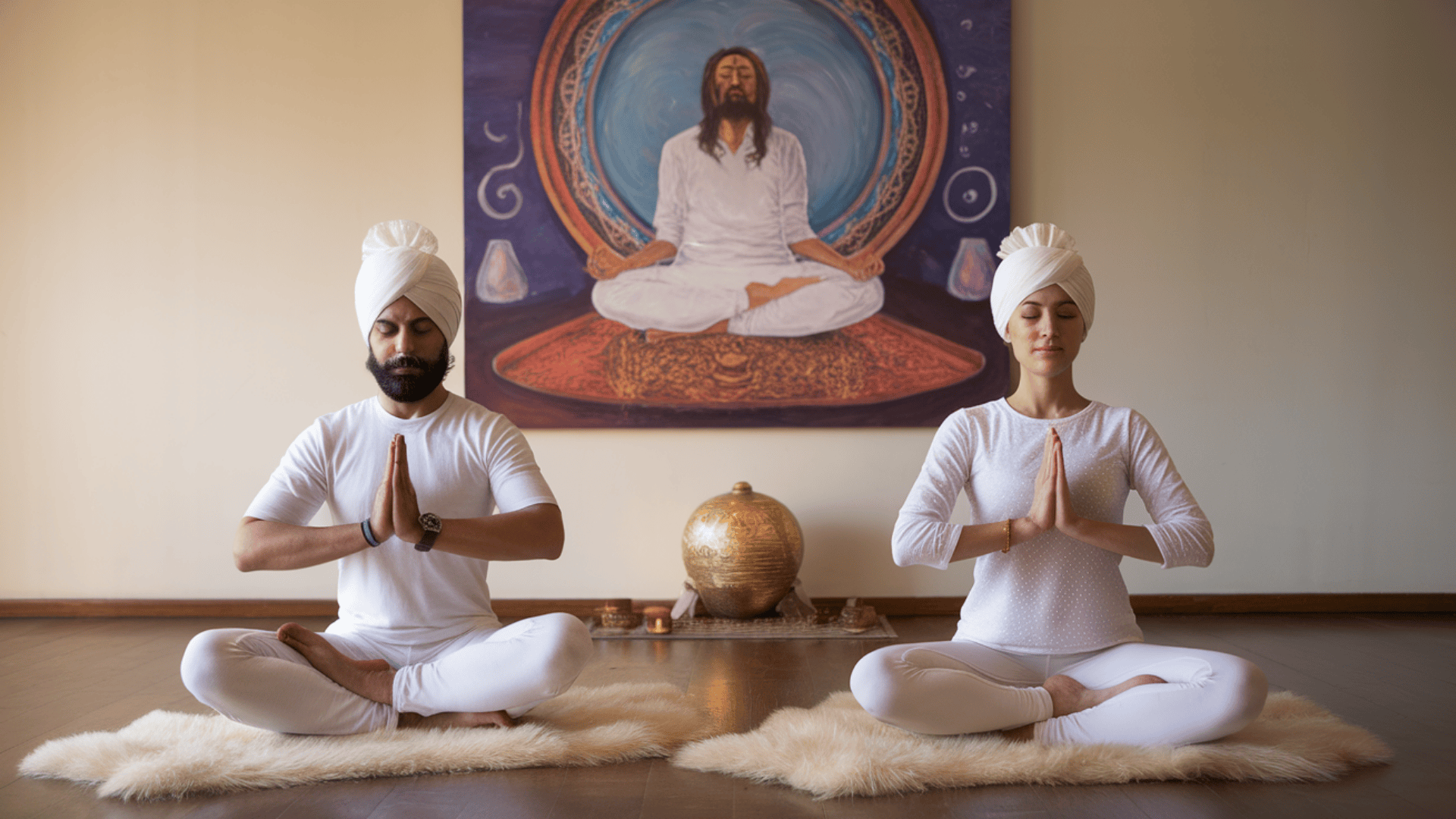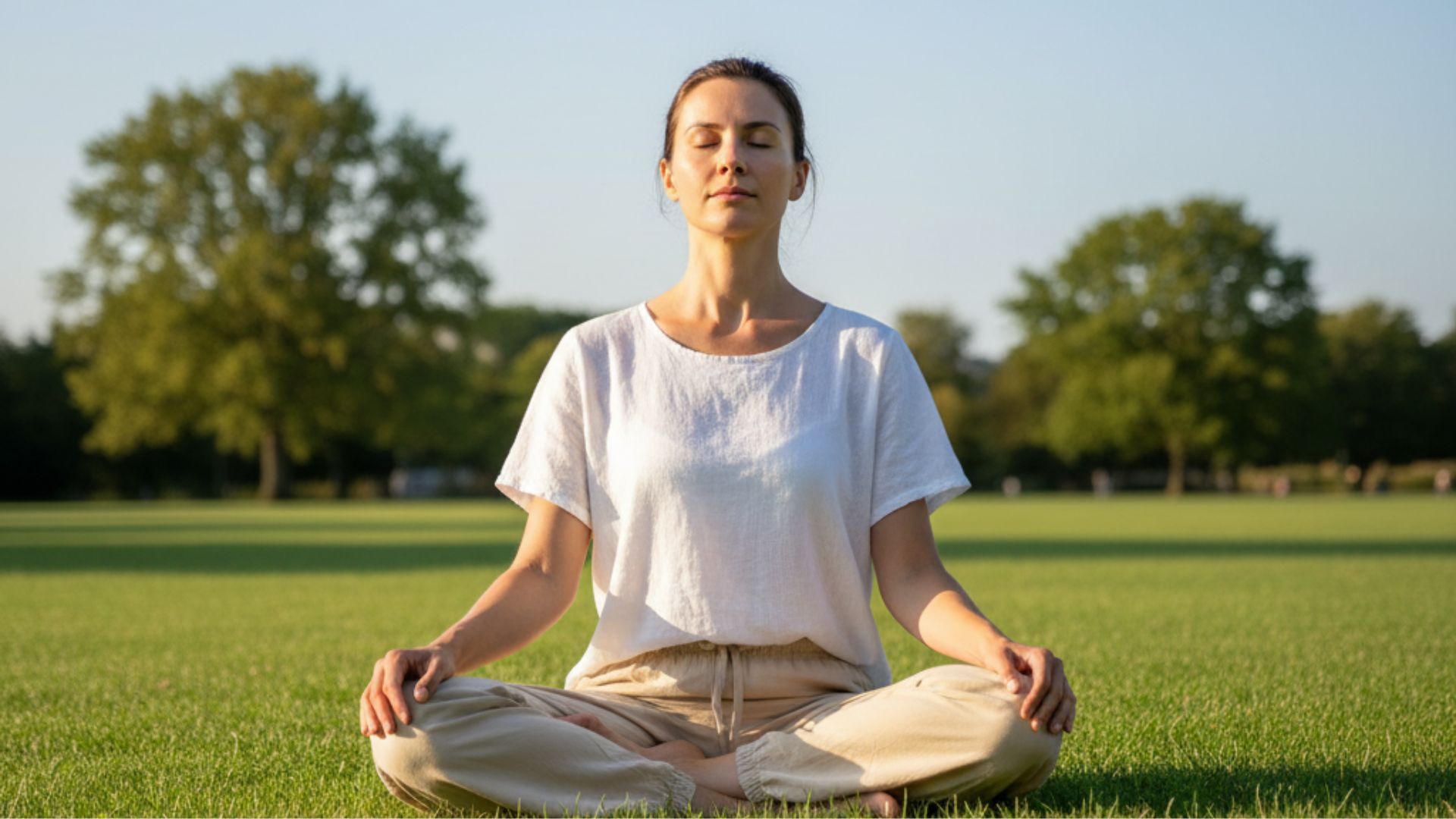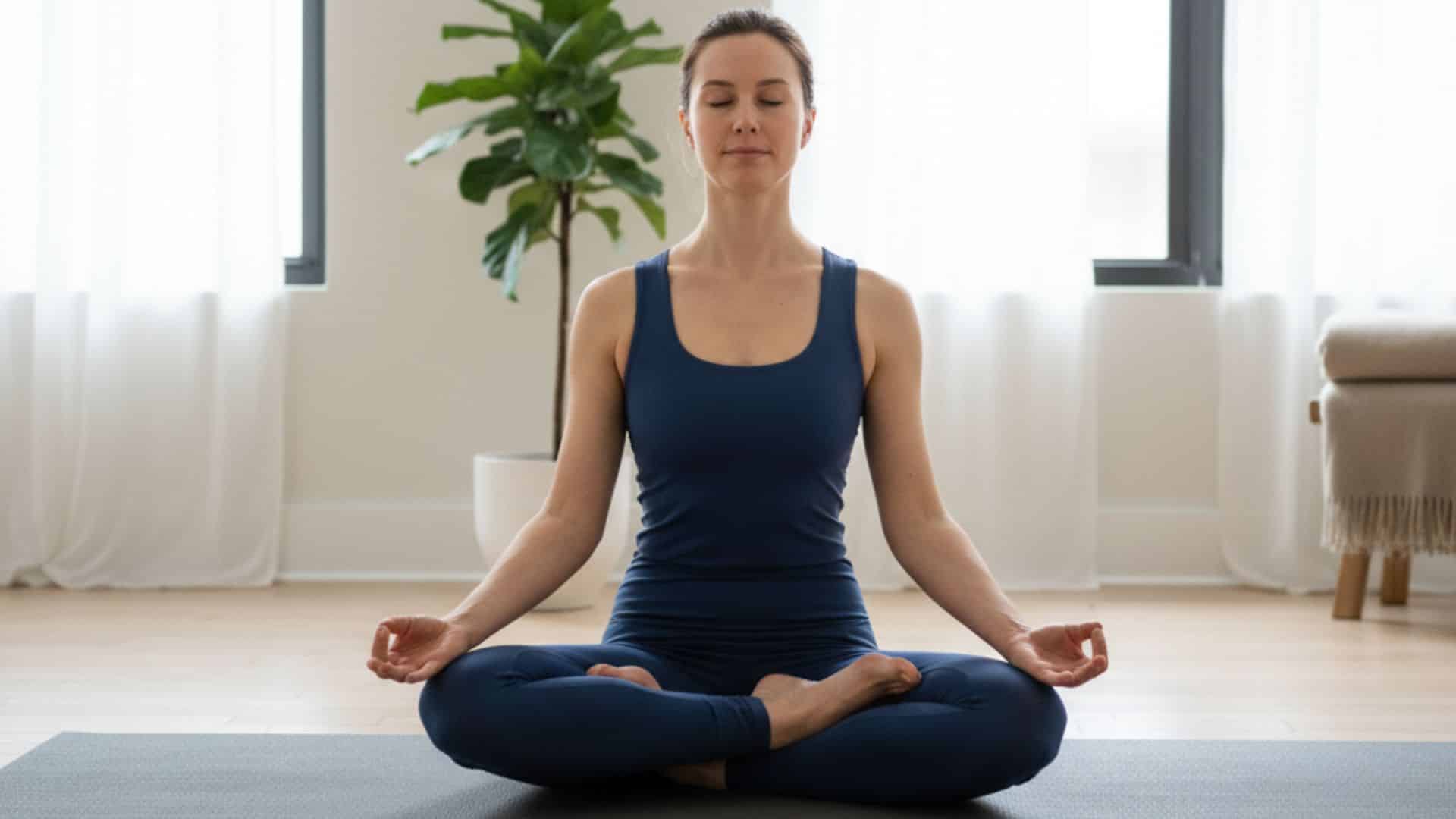You’ve just finished your first yoga class. The teacher brings her palms together, bows slightly, and says “Namaste.” Everyone around you does the same. But what just happened?
Most people think Namaste is just a fancy way to say goodbye. They’re missing something beautiful.
This Sanskrit word carries thousands of years of spiritual wisdom. It’s not about being trendy or sounding enlightened. It’s about a genuine human connection.
In yoga studios worldwide, Namaste has become the bridge between ancient Eastern traditions and modern practice.
But here’s what many don’t realize: when used mindfully, this simple word can change how you connect with others both on and off the mat.
This guide breaks down the meaning of Namaste in yoga, its proper use, and why it matters more than you think.
What Does Namaste Mean?
The word Namaste comes from Sanskrit, the ancient language of India. This sacred word breaks down into three simple parts:
- “Nama” means bow or salute
- “As” means I
- “Te” means you
Put together, Namaste in English means “I bow to you.”
But this translation only scratches the surface. The spiritual meaning runs much deeper. Many yoga teachers explain it as “The divine light in me honors the divine light in you.”
Others say it means “My soul recognizes your soul.” This makes Namaste more than just a greeting; it’s a profound expression of respect.
It becomes a way to connect with others on a soul level. When you say Namaste, you’re not just being polite. You’re acknowledging the sacred spark that lives inside every person.
The Role of Namaste in Yoga: More Than a Greeting
In yoga studios around the world, Namaste has become much more than a simple word. It’s now a universal way to show respect and gratitude between teachers and students.
You’ll typically hear Namaste at two key moments during class:
- At the beginning, to set a positive intention for practice
- At the end, to thank everyone and create a sense of closure
When we say Namaste in yoga, something special happens. We stop focusing on who did the perfect pose or who struggled with balance.
Instead, we recognize the shared energy that filled the room during practice. It’s a way of saying “thank you” that goes beyond the physical movements.
We’re honoring each other as complete human beings, not just bodies doing yoga poses.
This simple word helps create the peaceful, respectful atmosphere that makes yoga different from regular exercise.
It reminds us that yoga is about connection – with ourselves, with others, and with something greater.
Anjali Mudra: The Hand Gesture of Namaste
Namaste isn’t just spoken, it’s also a beautiful hand gesture called Anjali Mudra. This physical expression makes the word even more meaningful.
How to Do Anjali Mudra:
- Press your palms together at heart level
- Gently bow your head forward
- Close your eyes or soften your gaze downward
What This Gesture Means:
- Unity: When your palms touch, it shows balance between your logical mind and feeling heart
- Humility: The small bow demonstrates respect for others
- Connection: It represents the bond between you and everyone around you
This simple hand position turns an ordinary greeting into something sacred. Instead of just saying hello, you’re creating a moment of mindfulness.
Your body language matches your intention. The gesture slows you down and helps you focus on the present moment.
Many people experience a sense of calm when practicing Anjali Mudra. It’s like pressing a pause button on the busy world outside.
This is why yoga teachers often hold this position for a few extra seconds; it gives everyone time to truly connect with the meaning behind the Namaste gesture.
The Spiritual and Cultural Meaning of Namaste
Namaste existed long before yoga studios opened around the world. This word has deep roots in Indian culture that go back thousands of years.
You’ll find Namaste used as a respectful greeting in three major religions: Hinduism, Buddhism, and Jainism. It’s woven into the fabric of daily life across India and Nepal.
1. In Everyday Indian Life
Across India and Nepal, Namaste is as common as saying “hello” or “goodbye” in Western countries. But it carries more weight than a casual wave or handshake.
This traditional greeting shows proper respect, especially when meeting elders or people in positions of authority.
Grandparents light up when younger family members greet them with Namaste instead of a quick “hi.” It’s a way of honoring relationships and showing good manners that has lasted for generations.
2. In Spiritual Practice
For millions of people, Namaste goes beyond politeness; it’s a spiritual act. When you say Namaste, you’re acknowledging that the other person has a soul, just like you.
Many Hindus and Buddhists believe this creates positive karma between people. It’s like saying, “I see the sacred part of you, and I honor it.” This makes every greeting a small prayer or blessing.
Instead of just noticing someone’s appearance or job, you’re recognizing their spiritual worth.
3. In Modern Yoga
When yoga spread to the West, the greeting “Namaste” emerged as a cultural bridge.
It helps Western students connect with the ancient Eastern wisdom that gave rise to yoga thousands of years ago. This simple word reminds everyone that yoga isn’t just about getting flexible or strong.
It’s about growing as a whole person, mind, body, and spirit. By using Namaste, yoga studios worldwide honor the roots of this practice while making it accessible to people from all walks of life.
How to Mindfully Incorporate Namaste in Your Practice
Using Namaste mindfully can transform your yoga experience from good to truly meaningful. Here’s how to make this simple word more powerful in your practice.
For Yoga Students:
- Pause with intention: Don’t rush through ‘Namaste’ as if it’s just part of the routine. Take a deep breath and really feel the connection to your teacher and classmates.
- Practice gratitude: Use this moment to thank your body for being present, your teacher for guiding you, and your fellow students for sharing the space.
- Mean it when you say it: Let the word come from your heart, not just your mouth.
For Yoga Teachers:
- Set the tone: Begin with Namaste to create a sacred space for practice.
- Maintain eye contact: Look at your students whenever possible to establish a genuine connection.
- Explain the meaning: Help new students understand why this word matters.
Beyond the Yoga Mat:
- Try it at home: Say Namaste to family members as a way to show extra love and respect.
- Use it in difficult moments: When someone annoys you, silently think “Namaste” to remind yourself of their human worth.
- Share the practice: Teach friends what it means so they can experience its power too.
Remember, Namaste works best when it comes from a genuine place. Even on a tough day, this simple practice can help you find connection and peace.
Conclusion
Namaste is far more than a trendy yoga word. It’s an ancient practice that connects you to thousands of years of spiritual wisdom.
When you understand its true meaning, “I bow to you” and “the divine light in me honors the divine light in you”, every yoga class becomes deeper.
The beauty of Namaste lies in its simplicity. Press your palms together, bow your head, and feel the connection. This small gesture shifts your mindset from “me” to “we.”
Remember, Namaste works best when it comes from your heart. Let this word remind you that yoga is about more than perfect poses. It’s about honoring the sacred in yourself and others.
Ready to deepen your practice? Start bringing mindful intention to your next Namaste.
Frequently Asked Questions
Why Do Yoga Instructors Say Namaste?
Yoga instructors say ‘Namaste’ to create a connection, show gratitude to their students, and honor the sacred tradition of yoga practice.
Does Namaste Mean Peace?
No, Namaste literally means “I bow to you,” though it creates peaceful feelings by acknowledging the divine in each person.
What Is The Spiritual Meaning Of Namaste?
Spiritually, Namaste means “the divine light in me honors the divine light in you” or “my soul recognizes your soul.”
When To Say Namaste In Yoga?
Say “Namaste” at the beginning of class to set your intention, at the end for gratitude and closure, or anytime you want to show respect.

